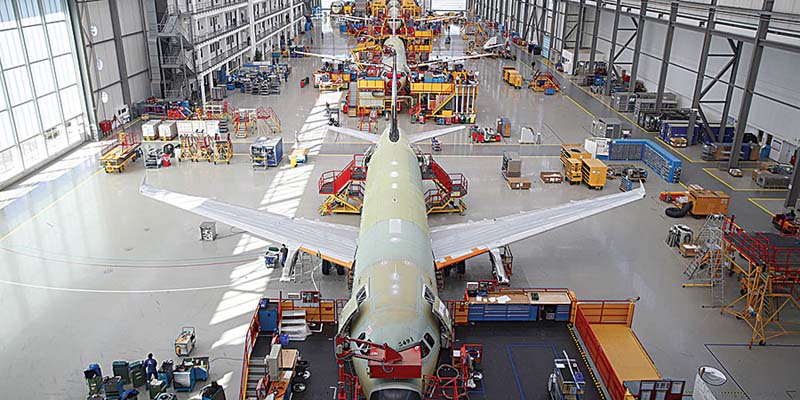Aeroparque reopened, with a completely new runway and the construction of the new international sector of the passenger terminal. These works are part of the total modernization plan that the company is carrying out together with the ORSNA (National Airport System Regulatory Body) and the National Ministry of Transportation.
See also: U.S. records record number of air travelers since start of the pandemic.
In this way, domestic flights from Aeroparque are resumed and the regional operation returns, which will now have a larger sector, with more services and totally renovated. The new extended and widened runway has more and better technology, optimizing operations and providing greater safety and connectivity with the outside world.
Aeroparque had been undergoing maintenance works (minor) for more than a year, which implied the closure of the airport for approximately two months. Taking advantage of the particular moment of the pandemic and the world crisis that affected flight traffic, it was decided to carry out this major work, with a view to the long term and thus improve the airport’s category.
See also: Colombia, the third country the region with the greatest recovery air connectivity.
Runway: the runway of Aeroparque Jorge Newbery, which had a total length of 2,100 meters, was increased by 250 meters to the south and 340 meters to the north (590 meters), reaching a length of 2,690 meters today. In addition, it was widened by 20 meters, which will optimize regional operations and improve safety and connectivity with the exterior, with unrestricted Class C aircraft. This will result in more possible destinations, more passengers, and greater cargo, among other benefits.
Beacons: The total renovation of the runway included the installation of a new runway marking system that enhances operational safety during takeoffs and landings. This new system is of high intensity in Operational Category III configuration, taxiing and rapid departures, and includes runway axis, edge, threshold and runway end lights. Also, new approach lighting systems at both headlands. In addition, a new instrument landing system – ILS CAT. III-. This equipment substantially improves the safety of operations and allows operating in low visibility conditions.
International Sector: this pre-boarding area was designed to handle the operation of 6 flights per hour. The 3 PSA (Airport Security Police) scanners are maintained and 6 double migration boxes were added (12 positions in total) along with 5 e-gates. A detail of the intervention is that 2 gates of the domestic pre-boarding are working as flex positions, i.e. gates 15 and 16 can be used to board regional flights, which is done through sliding glass partitions similar to those already installed at Cordoba airport. In addition, this pre-boarding now has three gastronomic venues: Fausto, Florida Garden and Outback (the second in Argentina, after the one opened in 2019 in Ezeiza). International Arrivals was expanded with 800m2 of surface area along with the refunctionalization, which covers an approximate area of 4,630m2. Priority is given to a fluid design with a focus on user safety. Thus, there is a 1211 m2 migration sector. On the other hand, the 3 baggage belts were separated to provide greater comfort with an area of 773m2.
Customs quintupled its surface area, leaving an office area and a 1200 m2 sector. The international arrivals public area now consists of a 887 m2 hall that includes a new Havanna store, with a seating area overlooking the river (on the outer curve towards the north parking lot). It also includes a 1200m2 landscaped area and sidewalk.
Following the international regulatory principles recommended by the ICAO (International Civil Aviation Organization), the National Government decided to allocate funds from the National Airport System trust fund to this project, as well as to other projects throughout the country. Thus, the monthly payment made by Aeropuertos Argentina 2000 to these funds as a fee is used for necessary investments in the airports, including those that are not concessioned to AA2000.
Related Topics
Airbus Confirms Delivery of 78 Jets in October, Faces Challenge of Delivering 235 More in Two Months to Meet Annual Target
Wizz Air Delays Airbus Jets Deliveries Until 2033 and Reduces A321XLR Order
Airbus Delivers 78 Aircraft in October, Sources Said
Korean Air Becomes New Airbus A350F Customer

Plataforma Informativa de Aviación Comercial con 13 años de trayectoria.




